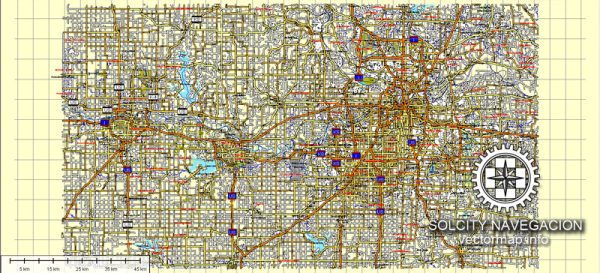Kansas City, Lawrence, and Topeka are all cities located in the state of Kansas in the United States. Each of these cities has its own unique socio-economic characteristics.
- Kansas City:
- Economy: Kansas City, Kansas, and its neighboring Kansas City, Missouri, together form a major metropolitan area. The economy of this region is diverse, with a focus on industries like manufacturing, healthcare, technology, and agriculture. It is home to several large corporations, including Sprint (now part of T-Mobile), Cerner, and Hallmark.
- Socio-Economic Diversity: Kansas City exhibits socio-economic diversity, with a range of income levels. Some areas are affluent and have a relatively high standard of living, while others face economic challenges. The city’s overall cost of living is often considered more affordable than many other major U.S. cities.
- Education: The city is home to several higher education institutions, including the University of Kansas Medical Center and the University of Missouri-Kansas City.
- Lawrence:
- Economy: Lawrence is a smaller city known for its diverse and vibrant economy. It’s anchored by the University of Kansas, which contributes significantly to the local economy. The city also has a thriving arts and cultural scene, which contributes to the socio-economic vibrancy.
- Socio-Economic Diversity: Lawrence’s population includes a mix of students, academics, and professionals, creating a dynamic socio-economic environment. The cost of living can vary, with some parts of the city being more affordable than others.
- Education: Lawrence is home to the University of Kansas, which is a major educational and research institution. The university is a significant driver of the city’s socio-economic landscape.
- Topeka:
- Economy: Topeka is the capital city of Kansas and has a diverse economy. Government, education, healthcare, and manufacturing are prominent sectors. It’s home to state government offices and Washburn University, which has an impact on the city’s economy.
- Socio-Economic Diversity: Topeka exhibits socio-economic diversity, with various neighborhoods and areas representing a range of income levels. The cost of living in Topeka is often considered lower than in larger metropolitan areas.
- Education: In addition to Washburn University, Topeka has several public and private educational institutions, contributing to the city’s educational landscape.
Overall, these cities reflect the diversity found within Kansas, from the urban and economically diverse environment of Kansas City to the smaller, culturally rich and academic atmosphere of Lawrence and the governmental and educational influences in Topeka. Each city has its own unique socio-economic profile, and residents’ experiences can vary depending on their location within these cities.


 Author: Kirill Shrayber, Ph.D.
Author: Kirill Shrayber, Ph.D.